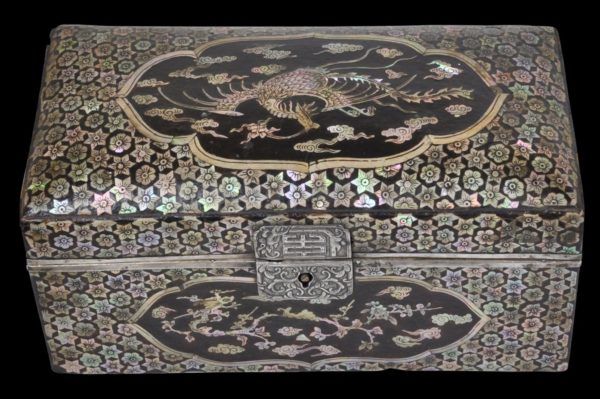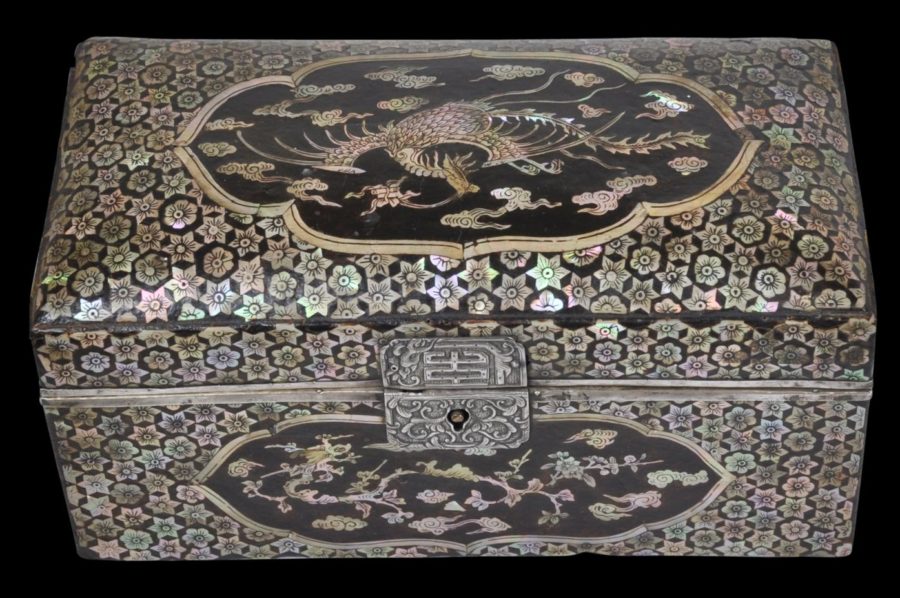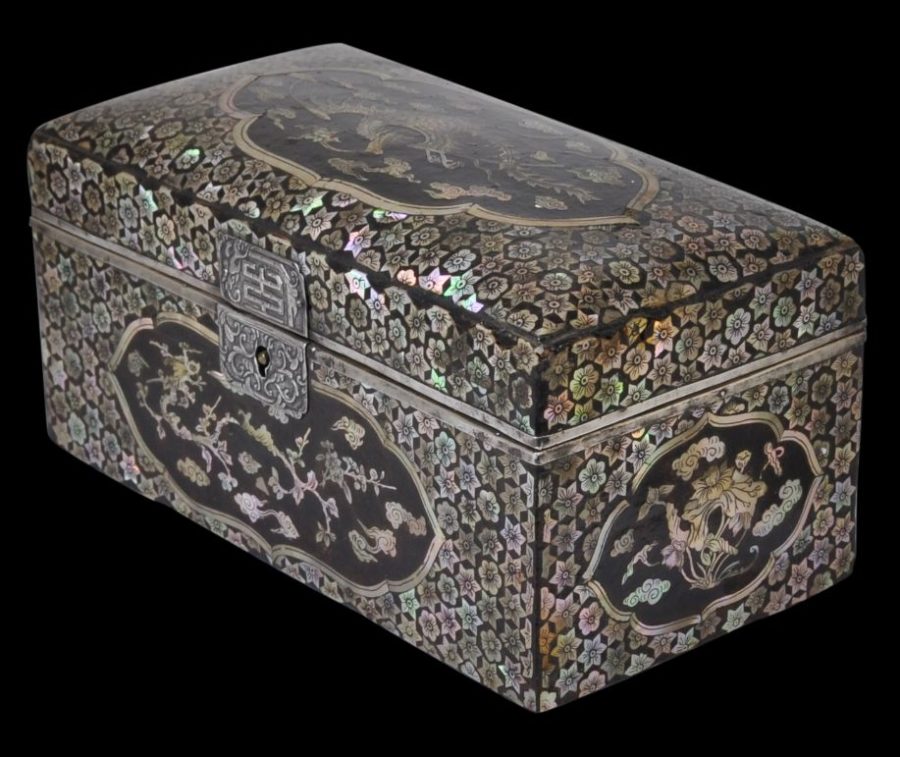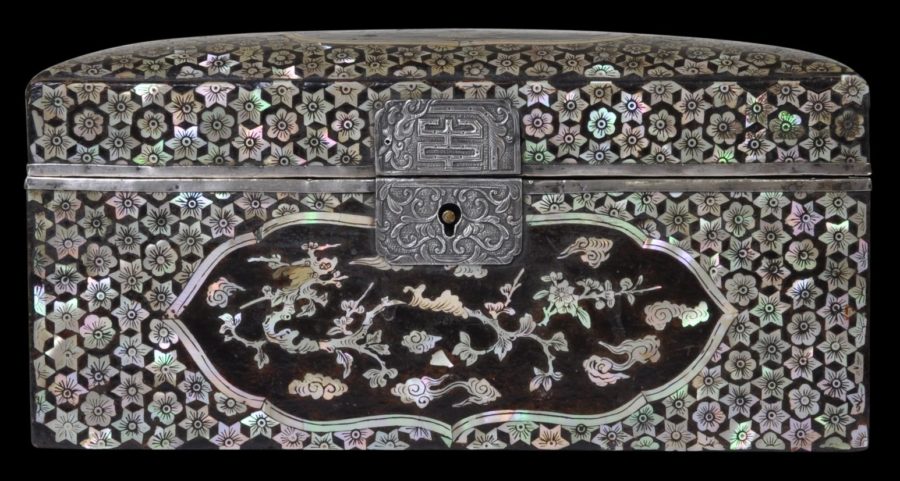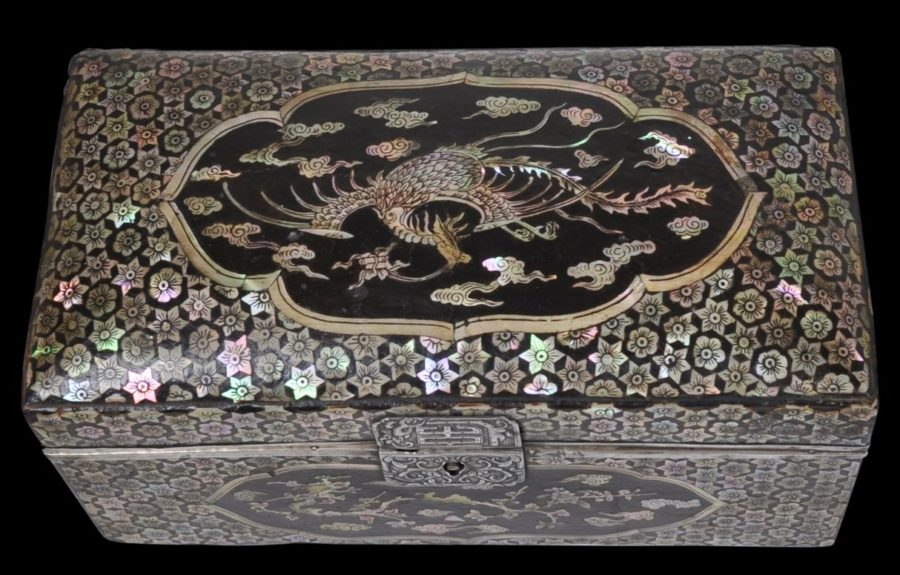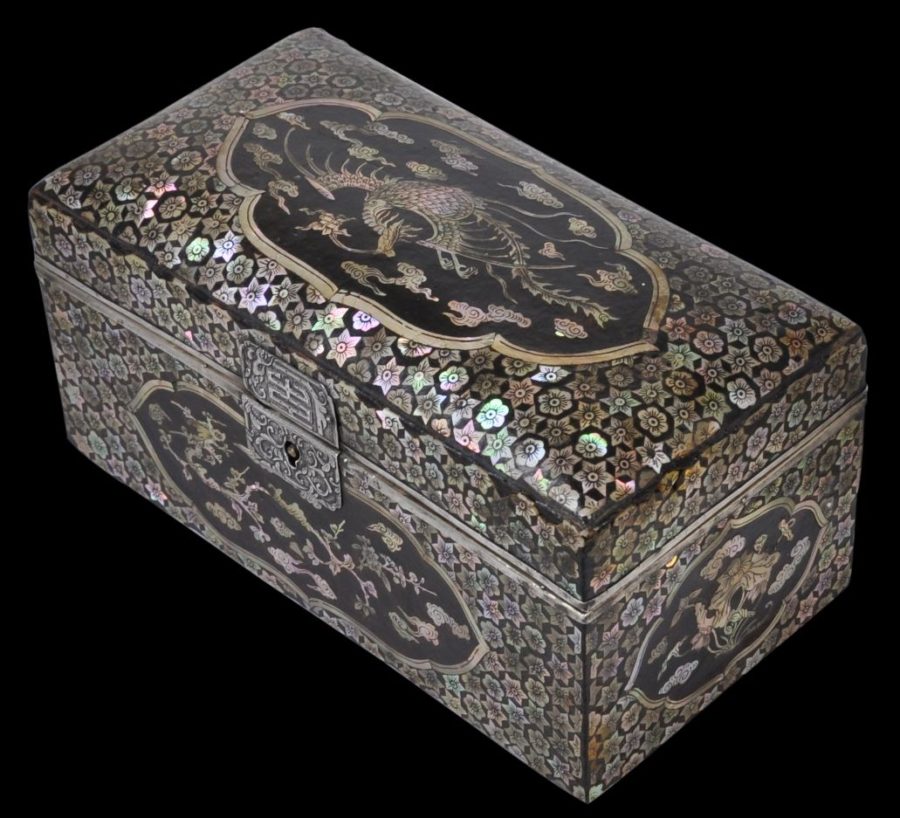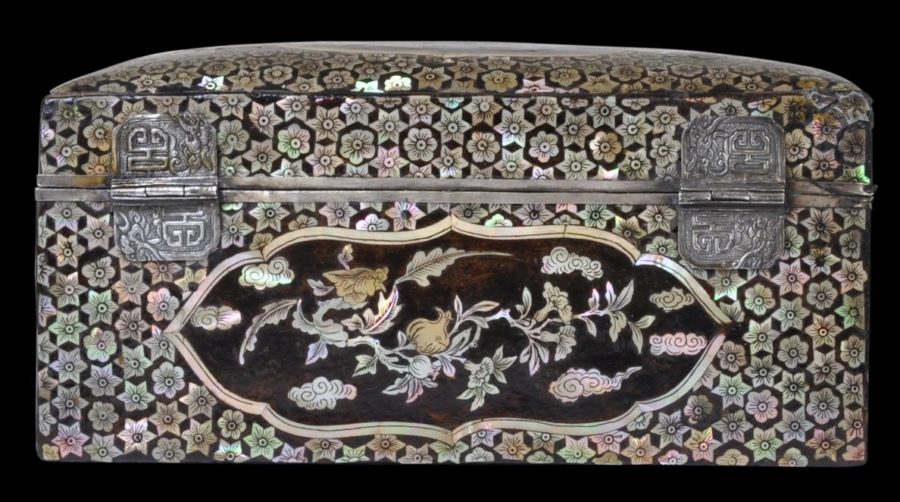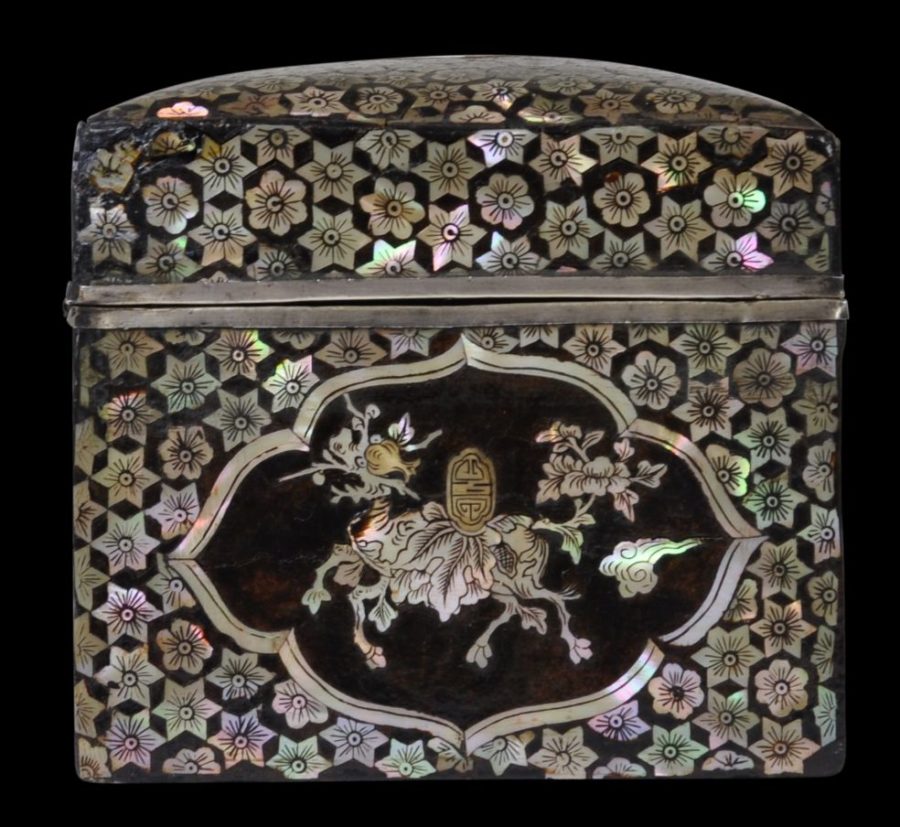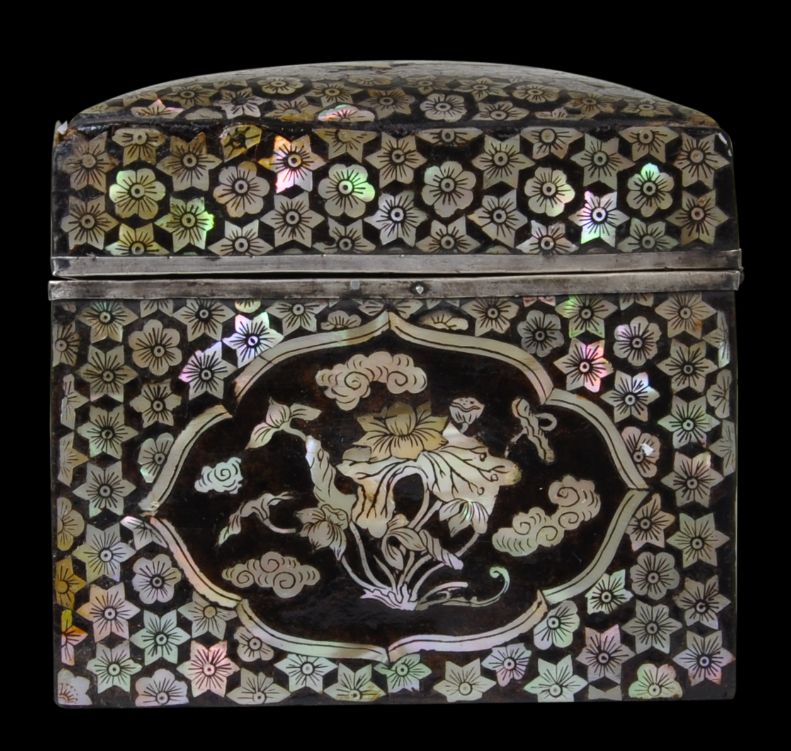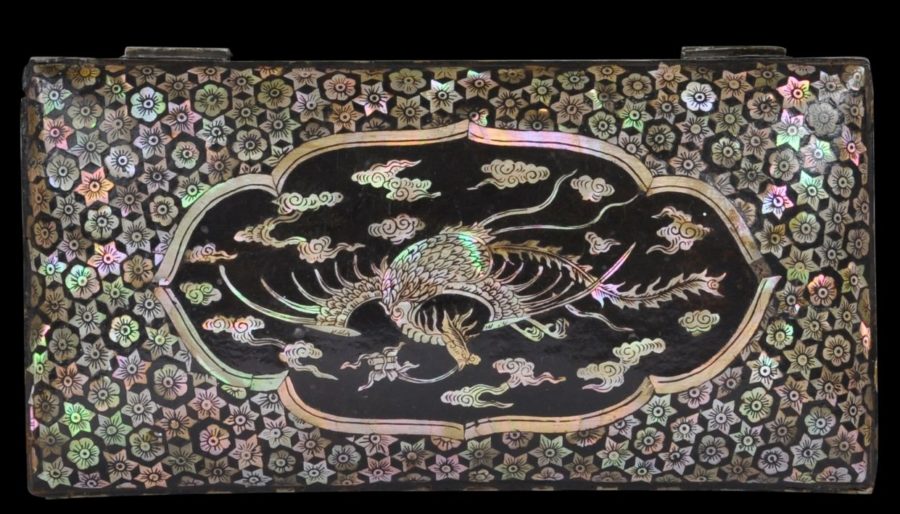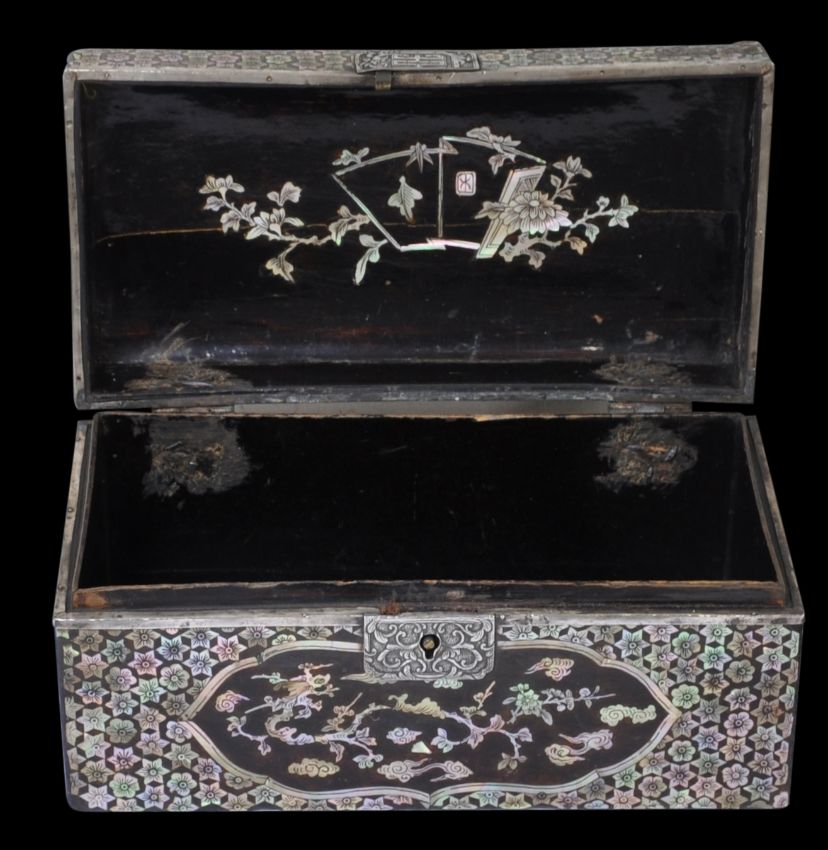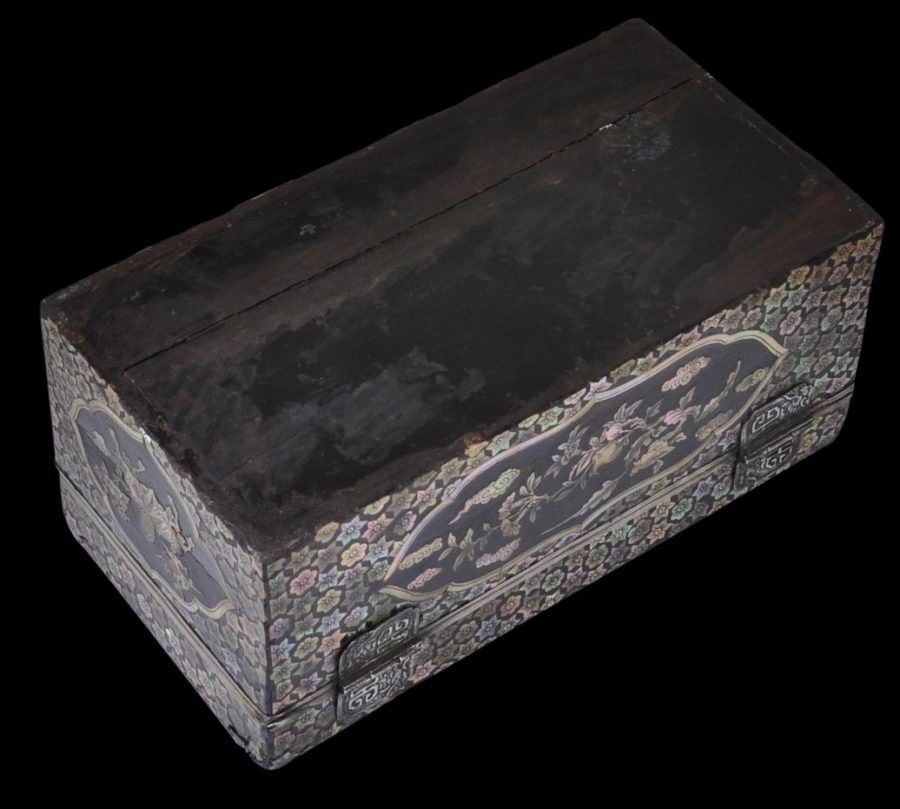This box is the work of local Chinese artisans who worked in the colonial Dutch East Indies, most probably in Sumatra, or perhaps Vietnam or the Ryukyu Islands. It is of lacquered wood panels that are inlaid with mother-of-pearl, and has a hinged, slightly domed cover.
The lower edge of the cover or lid, and the upper edge of the base, are overlaid all the way around with plain, silver strips that have been carefully applied with tiny silver pins. The key plate is rectangular and chased with leafy scrollwork and a Chinese-style symbol – probably a stylised Xi or ‘happiness’ symbol – against a tooled background. The two hinge brackets on the reverse are of similar form and similarly decorated.
The interior of the lid is decorated with panels amid chrysanthemum sprays and one of the panels has the Chinese character Sui or ‘water’.
One remarkable feature of this box is that most of the panels are decorated in mother-of-pearl inlay with auspicious Chinese flowers and shrubs, but the mother-of-pearl is arrayed so that the floral sprays also depict traditional Chinese auspicious animals. The front panel, for example, shows a spray of plum blossom which on closer inspection can also be seen to depict a dragon. A side panel shows a peony or chrysanthemum but this also depicts a chi’lin. The other side shows lotus blossoms which morph into a tortoise. The reverse panel shows a pomegranate spray but this can also be seen as a phoenix. The lid panel, however, very clearly depicts a phoenix.
These covert depictions are unusual in Chinese art – usually flowers are flowers and animals are animals. This blending, or suggestion of animal forms, is more in keeping with Islamic practices, whereby the outright depiction of living creatures tended to be avoided among some Islamic groups. Indigenous Islamic groups in Sumatra tended to follow this design convention whereby animal forms were either disguised or hinted at. Examples can be seen in their silverwork for example: betel boxes will be decorated with foliage and the foliage can also be seen as the wings of birds from which a bird head will emerge, for instance.
The work is also similar to that seen in Vietnam where the device of flowers and foliage that almost mutates into animal forms also is used (see Sarraut et al, 1930).
The box retains its original lock although the key no longer is present.
This box is part of a small group of similar boxes that comprise similar mother-of-pearl inlay against a black lacquer ground, with silver mounts. The other published examples of this type of work seem to be restricted to conventional Dutch colonial betel box form. See Lee et al (2016, p. 166) for an example. We have previously sold a similar box, but without the plant/animal depictions.
Another box (in somewhat poorer condition), part of the Curzon Collection held at the National Trust’s Kedleston Hall, Derbyshire in England, has brass mounts but similar mother-of-pearl inlay. Its interior has a red lacquered tray with compartments suggesting that the box was intended to be a colonial document or scribe’s box or a jewellery box. It is described as ‘Chinese’ and 19th century but both attributions are likely to be inaccurate. Much or most of the Curzon collection was sourced by the Curzon family in India and it is to India that the Dutch East India Company (VOC) exported a lot of its wares as part of its intra-Asia trade, much of which was produced or assembled in the Dutch East Indies.
Precisely where such boxes were made is not fully clear. The mother-of-pearl work, use of lacquer and the Chinese-style motifs suggest the environs of Palembang in South Sumatra. The Dutch East India Company (VOC) and its successor agents sourced a variety of luxury goods for the European and Indian markets from Sumatra and elsewhere in Southeast Asia during the 17th and 18th century. Almost all these goods were trans-shipped through Batavia in West Java. Additionally, objects with this type of work have been found in Indonesia.
An alternative possibility, is that either British East India Company via its Sumatran outpost at Bencoolen shipped such boxes to Britain, or English country traders (independent English merchants who operated in Asia) did. This is possible given that several of these boxes have now turned up in the UK.
A final possibility is that they were produced in Vietnam for export to what is now Indonesia and the like where they served as betel boxes for the local well-to-do, and thereafter they were collected by Europeans and brought to Europe. The extent of the trade in luxury goods from Vietnam to the rest of Southeast Asia has not been fully recognised. There is a significant quantity of silver items used by the Straits Chinese of Southeast Asia for example that clearly are the work of Vietnamese silversmiths for example, both in private and public collections.
The box here is in very fine condition. There are no chips, and no significant losses. The lid fits well. Overall, it is remarkably well preserved.
References
Lee, P. et al, Port Cities: Multicultural Emporiums of Asia 1500-1900, Asian Civilisations Museum, 2016.
Sarraut, M. A., S,M. Khai-Dinh & M.J.E. Charles, L’Art a Hue, L’ Association des Amis du Viex Hué, 1930.


